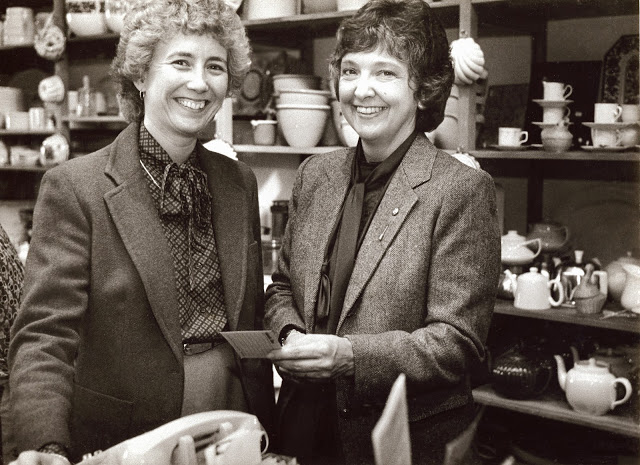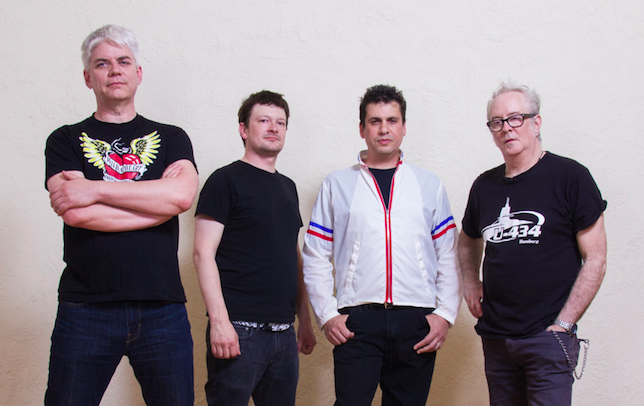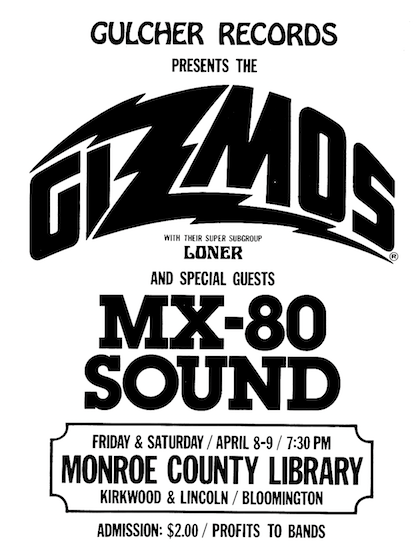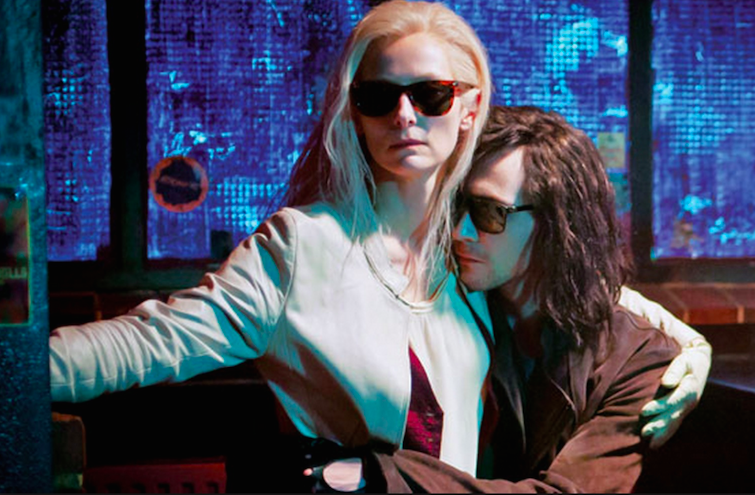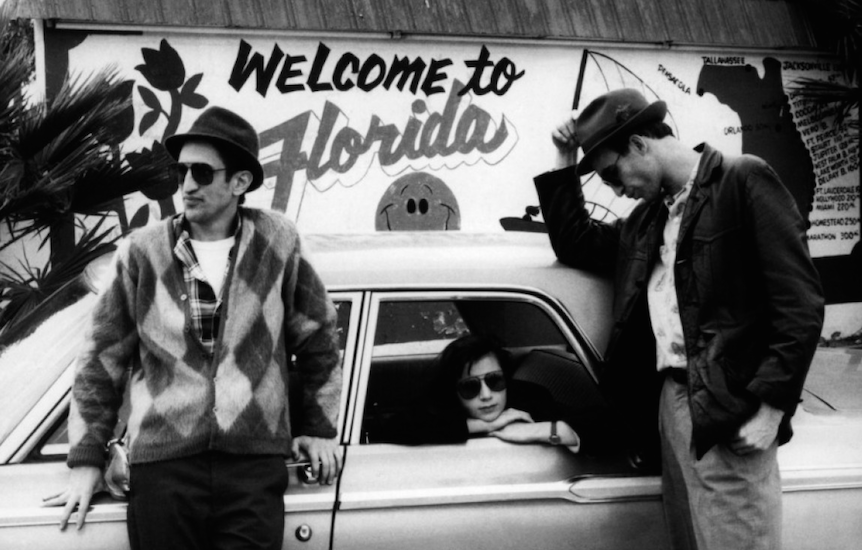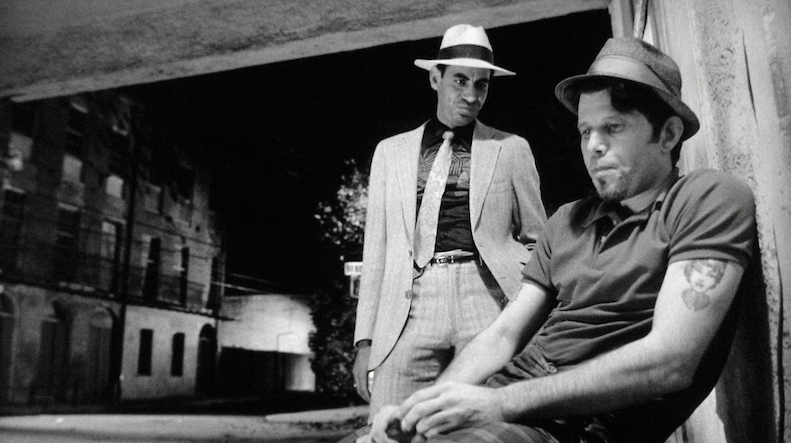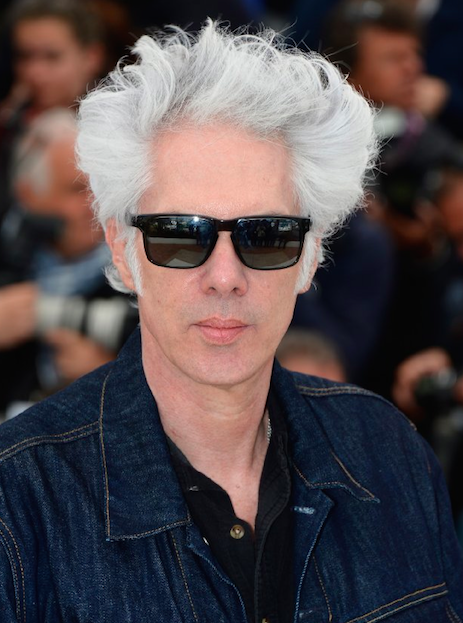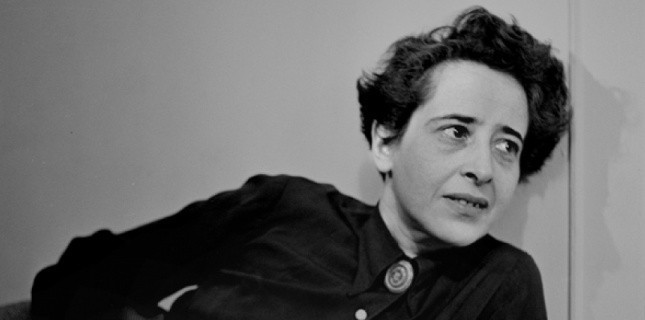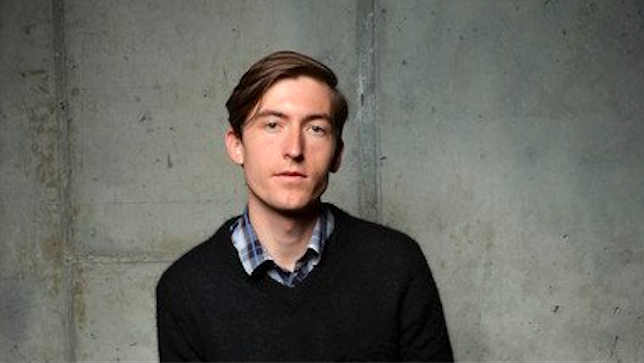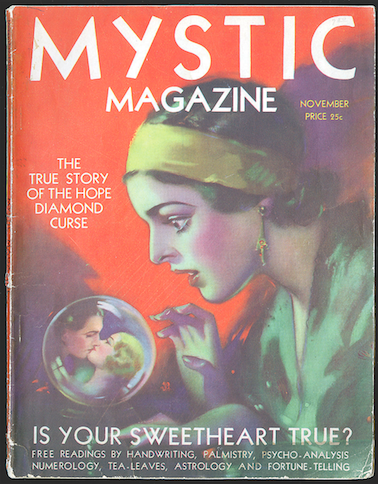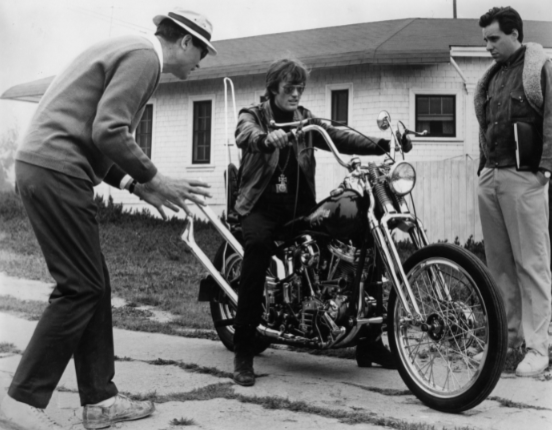Fiction: The Watchmaker
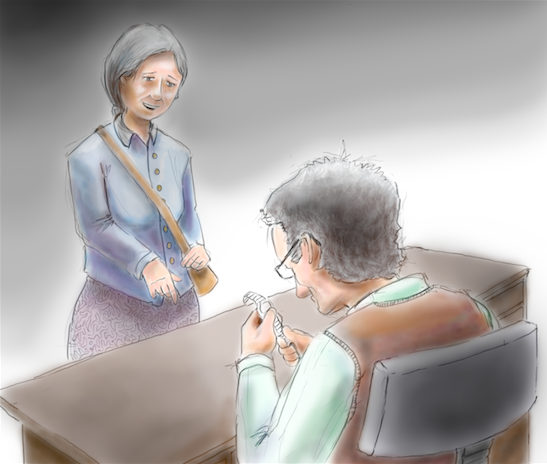
by Sara E. Leslie
A dozen watches ticked, some within a hairlength of one another, but all together, somehow, as if in the same key. The watchmaker’s steps moved measuredly toward the front desk, where an open watch lay carefully positioned from the night before. His mind was already elsewhere as his hands took the watch up and fingered it, gently, with the inborn skill of two generations of repairing watches. The quiet ticking of the watches on the shelves no longer startled him. In fact, he could almost no longer hear them.
He stopped, suddenly thirsty, his hands still involuntarily moving, hovering over the watch’s open back, twisting and gliding in the rivulets of intricate muscle memory. There was a ham sandwich and a drink waiting on him in the back. He carefully laid the watch down on the glass counter, rose, and headed for the back room, giving one final glance at the watch’s positioning before the sudden, loud sound of the bell at the door.
He saw the shape of a woman and immediately turned on his heel and strode back over to the counter, pushing the watch he had been working on neatly behind the cash register. “Good morning,” he called out.
Halfway across the room, the woman was already fumbling with her purse. She pulled out something, and the watchmaker saw the glint of slightly dulled silver. “Here,” she said almost inaudibly. She raised her head and began to approach the desk, holding out the watch for him to examine. “It’s a bit battered,” she said by way of apology. “It’s…it’s come by a lot over the years.”
The watchmaker did not need to look twice at the watch to see that it was cheap, a mere bauble, but probably easily fixable. The glass wasn’t even scratched. The hands had stopped, but that was the case with almost every watch brought in to the shop. In fact, this one didn’t even look that “battered,” save a little rusting and dulling of the silver band and end piece. He held it by both ends of the band and placed it carefully on the counter.
“Do not worry, Madam. I will have the problem fixed in no time, whatever ails it.” He smiled, a courteous, easy smile, his eyes already flicking to the other side of the room where other, more important matters awaited him. She was still standing there, still looking at him. She did not seem satisfied. He grunted, cleared his throat, and then picked up the watch again to briefly examine it in the shaft of sunlight coming in through the door. “It looks like it will need some minor repairs, perhaps a little oiling to get it back to its original shine. I can have it ready for you first thing Friday morning, yes?” He smiled again, at the watch this time, placed it ever so lovingly back on the counter, and looked up at his customer. Her eyes were still on him.
“I can tell it’s got a few things wrong with it,” she ventured. “I think, in fact, that it’s been stopped for quite a while now. It’s just that I only took it out recently, which is when I noticed it had stopped.” She looked away, and the watchmaker was surprised to see a look of something close to shame flit across her face.
He had seen many women walk into his store over the years, kerchiefed and housedressed, ogling watches for their husbands. He was dismissively polite to those women, but for the most part let them wander about, alone or in groups. They never ended up buying anything. And then there were some who would bustle in, all brisk and domestic-like, and hand him the broken or stopped watch just as if they were handing in a dress to be laundered or an order for a cut of meat for dinner. “I’ll have it ready for you by Friday,” he’d say, without looking up, and these kerchiefed women, already thinking of the night’s dinner, would nod, turn swiftly on their heels, and leave without another word.
This one, however, was leaning over the counter, scarcely two feet away, staring at him openly. “Well, I might as well tell you,” she said after a pause, “I haven’t looked at that watch for thirty-eight years. For thirty-eight years it’s been lying in my bureau drawer, under a few old things of my mother’s. Only yesterday did I bring it out to examine it, and saw that it had stopped.”
◆
The watchmaker’s eyes moved expertly over the open watch, flitting in and out of its contours. He had to pause and blink a few times as he adjusted his vision to the smallness of each piece. Most of his customers were men, so he was used to fixing men’s watches. This one, though, was clearly a woman’s watch—every piece so delicately crafted as to almost be invisible. A cup of warm soapy water and bottle of clear acetone lay at the ready next to his cup of coffee. He sighed, settling down in his chair. It was an old watch, as she had said, but an easy fix, and he had until Friday.
This was the sort of rhythm he liked—complete silence, save the universal hum of ticking in the next room, steaming hot coffee to warm his body and clear his head, and the neat parts of a coil watch spread out before him. He had seen his last customer of the day an hour ago, and now he could concentrate solely on the perfect geometry of the tiny designs before him.
He held the coils up to the size chart, spread out like snakes against the flat wall. They were the right size, and he put them aside. Next, the connecting pieces, which were perfectly linear. The gear box opened like a mouth, the gears comfortably side by side, gently touching like a full set of teeth. He readjusted his position in the chair, but upon further thought, got up and stretched.
Now came the calming part: soaking everything in a miniature hot soap-and-acetone bath, which warmed the tips of his fingers until they tingled. This took a full hour, and three more cups of coffee. Next, a slick, shiny oil bath. He oiled each piece so gently he may as well not have been touching them. At nine o’clock, he put everything back in, and then wound the watch. The tiny animal, cold and glistening-bright, like a made-up corpse newly laid in a casket, smiled silently up at him and did not utter a sound.
He grunted and turned the watch over. A whole evening’s work had yet to reveal anything wrong. Well, old watches were seldom easy to diagnose or fix, but they were still a loveable challenge. The day’s project fit neatly in his desk drawer, cushioned in a velvet cloth. The darkness of the shop finally matched the darkness outside as a flurry of gentle clock-voices bid him goodnight.
◆
She was at the shop the next morning, at 8:33 according to the clocks on the wall. He stood in the back corner winding his favorite clock of the moment, an early 19th century French Empire mantel clock he fondly called “Napoleon Bonaparte”. He tried to mask his surprise at seeing someone in the shop so early, and walked over, his silk trousers rustling ever-so-slightly. He smoothed his hand over his impeccably-combed hair.
“How is the watch coming?” she asked as she approached the counter. As if she hadn’t just left it with him the day before. Did she expect him to have finished? Perhaps she was confused as to when she was supposed to come back for it.
“Madam,” he said, “I assure you I am doing the best that I can. The watch still needs a few more repairs—”
“The watch was given to me when I was seventeen,” she said. “By a boy named Tico Miranda. I was seventeen, he was nineteen. Tico found the watch at a shop somewhere, thought it was the most beautiful thing he had ever seen. He said he knew I was meant to have it. Whenever he stroked my arm he would always stop and stare at the watch, unfasten it from my wrist and hold it up to the moonlight. Sometimes he’d playfully put it on his own large wrist. ‘How did someone ever make something so small, so feminine?’ he’d ask the sky. Then he’d take the watch off and kiss the glass, kiss the frame, run those kisses down my arm to my hand. The watch’s face, the glass would reflect the glint of the moonlight. It glinted in his glasses too.”
He had never had so many words directed to him by a customer. The women that came in usually gossiped amongst themselves, and with him they were all business. He was a watchmaker, after all, not a hairdresser. He was at a loss for what to say, so he stared fixedly at the counter, feeling her breath on his sleeve. Then she spoke again, more softly this time.
“Tico left me for another girl he had met on a trip to Amsterdam, where he was going off to study that same year. I was seventeen. I had a lot of growing left to do. I took the watch off, put in a drawer under some of my mother’s old shirts, determined not to look at it or think of him. My arm felt bare and fresh for a while. The skin there felt cool and strange. I was determined not to think of Tico. But then, a year in, he came back.”
She paused: for effect or because she was out of breath? The watchmaker realized that he had been staring at a vague point below her left earlobe, and it was now making his eyes hurt. He cleared his throat.
“Ah, I see.” What did he see? Well, never mind. He couldn’t look her in the face. He should never look directly at his woman customers. It might give them the wrong impression. She seemed, though, not to care whether he looked or not. She continued talking, rapidly, almost leaning in to grab his arm as she did so.
“Tico came back, and this time he wanted more. He wanted me again, but it was different. The girl had broken his heart, and so he came back looking for me. He called the house many, many times. But I wasn’t home. Ever. He finally stopped calling. But, you know, I was sort of hoping he would never stop.”
Out of the corner of his eye he could see her hand, thick, work-worn fingers outstretched, very near to his sleeve where he was gripping the counter. He felt himself stiffen. “Madam, I understand this watch is very important to you. It’s currently in the back room, and I’m working on it, but like I said, it won’t be ready till Friday morning.”
Her face betrayed a look of clear-cut disappointment, although he did not know what he had done wrong. “I understand.” She turned away. “Thank you again.”
◆
Nighttime. The clock voices in the shop chimed eleven before he registered it, the sound pulling him out of the watch’s body and back into his shop. His stomach rumbled. He had rechecked the coils, checked under the glass for any small bits of dirt that might be obstructing the hands. Checked again for rust. There was some still lingering on the bolt. He soaked the bolt in acetone again and replaced it.
As usual, he began to review memories in his mind. He had, as he long ago discovered, an exceptional memory. He could look at a picture one day and think, “Ten years later I’m going to be able to see this very picture again.” And then, thirty-seven years later, he could still remember that very moment, the square white farmhouse in the picture, the cheap gold-colored frame. Over the years he had stored up dozens of these mental pictures, and he took pride in the organization and efficiency of his brain.
Reviewing these memories one by one as he fixed his watches comforted him. Just as each little cog fit into place, so the cogs in his mind fit together, pulling out pictures from the compartments of his memory to review, over and over and over. Over and over anD….
Suddenly, his body jerked upward and his feet, already knowing what they were doing before he did, went over to the file cabinet where he kept the receipts from his estimate charges. He pulled hers out and glanced it over. Her name did not ring any bells, but it was a nice name, aforeign-sounding name. He smiled and whispered it aloud to the dozen or so clocks that listened steadfastly from the next room. Then he crept back to the watch on the desk like a guilty man.
◆
When Sylvie Schollstein walked into the watch shop the following morning at nine o’clock, the watchmaker was ready. He was ready with an explanation of everything he had done up to this point, a detailed account of the watchmaking process, anything that would distract her from the fact that the job was not yet complete. He had arrived a half an hour early that morning, in such a hurry to get to the shop that he had forgotten to comb his hair or pack a ham sandwich. He stood at the counter because it was the only place he could think of to stand, winding and unwinding a watch coil because it was the only thing he could think of doing with his hands. At 8:34 he began to feel panic rising within him, so he went back and made himself a cup of coffee and, setting it on the desk, accidentally walked back into the front of the shop with a bottle of acetone. He remembered the clocks, and began to wind Napoleon Bonaparte.
The bells jangled as she came in. He did not turn around.
“I’m fifty-five years old,” she said. “Fifty-five! Think of it. I was married once, to a hideous man, a German immigrant. I have a son named Raúl. He’s a doctor now. That’s the family practice. He lives in Spain now, in Barcelona.”
Her heavy frame couldn’t have been more solid, more imposing, distorted slightly behind the glass counter. He was surprised she hadn’t bypassed the counter and just walked right up to him, deftly swiped the clock from his hands, and demanded ownership of the whole place.
“Back again?” He wanted to keep his tone light and airy, but it seemed like all the air had been sucked out of it, along with the air in the room. “Is there something else I can do for you, while you’re here?”
“Yes,” she said. “Make me seventeen again.”
“I… I beg your pardon?”
“When I wear that watch again, I’ll have come full circle. Fifty-five to seventeen, all in a night. Just ready for something to happen.”
He opened his mouth, ready to ask a question, if needed, although he didn’t have one in mind. He realized Napoleon Bonaparte was still lying inert in his hands and set the clock back on its shelf. Without something to hold, he realized his palms were sweating.
“I’m all alone now. No husband, thank God.” She put a hand to her forehead. “My son is all grown, and Spain’s so far away… he’s engaged, did you know? She’s from a good family, Catalan, I think, but he’s never even given me the chance to meet her. They’ll probably get married in Spain, not here… I’m alone, sir, just like when I was young, for the first time in thirty-eight years. Maybe this is the right time. To find him, I mean. Or else….”
Her voice drifted off, but she resumed quickly, looking him straight in the eye.
“Maybe it’s just as well to continue living with ghosts. His, I mean. I’m not who I was at seventeen, that’s very clear. I’ve been through a lot. But…if…were to see him again, God knows where he is…” She reached out a finger and lightly touched his arm. “Is it… like trying for something impossible?”
Her touch was warmer than he expected, and he realized that he had been wondering what it would feel like. A faint but recognizable pulsing began at the spot she had touched, and spread lower until it had buried itself like a fleck of sand deep in a tiny crevice. He watched her finger as it dropped to the top of the glass counter and traced what appeared to be a watch outline on the surface. She sighed and turned, not waiting for a response. “This means so much to me,” she said as she left.
The watchmaker finally raised his eyes at the door clanging closed, the bell jangling wildly. His breath returned, loud, discordant. “This means so much to me,” he repeated aloud, embarrassed at the croak in his voice. “This means so much to me. This means so much to me. This means—”
“Shut up,” Napoleon Bonaparte ticked crossly.
◆
Four-forty in the afternoon. He stood up. “Damnit!” The anger in his voice surprised him. He sat down again, sipped his now-cold coffee, took out a new set of coils and laid them all out before him. She wanted to do the impossible… and yet he found it impossible even to fix her watch. The tiny thing seemed to have taken on the hue of Sylvie Schollstein’s deep grey eyes. They were there, the more he looked. And when he tried to conjure up mental images, to distract himself, all he saw were her bare hands, work-worn, her surprisingly thin wrists. Thin and soft, vulnerable, where the flesh met the hand.
He straightened himself, rubbed his eyes, massaged his temples. After thirty years in the watch business, and his father before him, he was finally losing it. He sighed, looked for the acetone, and began to disassemble everything again.
◆
At ten-thirty that night, he finally discovered what was wrong with the watch. One of the gears had a tiny chip on the end of one of its teeth, nearly invisible. It was a usual occurrence, but as he replaced the gear he wondered why it had taken him so long to find it. He reassembled Sylvie’s watch, gave it a once-over, and carefully wound it. The graceful, almost inaudible ticking struck up as if it had never stopped, as if it were talking to him, carrying on a one-sided conversation of its own.
The watchmaker thought about people who talked out of habit. People who talked out of nervousness, to fill the silence, to reassure themselves with their own voice. These were lonely people who paraded under a mask of confidence, who just needed, above all, to be listened to. Who said too much to avoid having to think about what they said.
And here he was, sitting in his chair, unable to get a word out to anyone.
◆
He thought of Sylvie coming in tomorrow, overjoyed at finally getting her watch back. “This is it. I’m off to find Tico,” she’d say, or something to that effect. She’d snap the watch on her wrist and prance out like a seventeen-year old girl, her eyes shining, ready to find her long-lost love. He would watch her through the glass in the door as she turned the corner.
He would fix Sylvie Schollstein’s watch. He would give her a wonderful gift, and she would leave happily, not thinking twice about the watchmaker whom she had spilled her life story to. He was just doing her a service, after all.
After all? Panic suddenly rooted him to his chair. Tomorrow she was coming, coming to open her wallet and pay him what she owed for a service well-rendered.
“I am more,” he said aloud, “than a service well-rendered.” He clutched the watch to his chest. “I am more,” he murmured, “than just a pair of hands that fixes watches.”
He held Sylvie’s watch gently up to his ear and closed his eyes.
◆
At 8:30 on Friday morning, when Sylvie Schollstein walked in the door of the shop, the watchmaker was waiting for her, his hair combed back and his shirt neatly tucked into his dress pants. He smiled at her from behind the counter, where he had set out her newly working, polished watch on top of a red velvet cloth.
◆
His heart was pounding, but he felt strangely elated. Throughout the store, the clocks were ticking in perfect unison. Napoleon Bonaparte, over in the corner, was sounding especially triumphant. As Sylvie approached the counter, the watchmaker held up her watch for her to see.
“It’s as good as new,” he said. “All it needed in the end was a change of one of the gears.”
Sylvie opened her hand; let him drop the watch into it. “Oh, it looks beautiful,” she murmured. She carefully fastened it on her wrist, as he had anticipated, and the watchmaker felt his breath quicken. “I’d be happy,” he said calmly, “to charge you a bit less than we had discussed, for such a small service.”
“Oh, that’s perfectly all right,” she said. “I’d much rather pay what I feel I owe you. After all, I did come in here and bother you every morning for three days straight.” A soft, nervous sound issued from her lips, and he realized it was the first time he had heard her laugh.
“Oh, no, you didn’t bother me,” he said. “Not at all. I assure you, it really wasn’t a bother.”
She looked up at him, suddenly wistful, and he would have seen it had he dared to take his eyes off her wrist. “I’d really like to thank you, sir,” she said, “thank you for… for being… well….” He saw her wrist tremble slightly, and felt she must have been blushing above it. “I… how much do I owe you?” she asked, taking her hand off the counter and reaching in her purse for her pocketbook.
He told her, and she paid. Afterwards she stood there, wavering, her eyes suddenly too bright, her hands suddenly too eager to fidget with the buttons on her dress. Looking for all the world, suddenly, like a seventeen-year-old girl, confused and stirred and open. “Sir—” she began, then stopped. “Sir, I….”
He watched her reflection in the glass countertop. He watched her look at him, read the unmistakable expression in her face. That was all he needed to know. He felt his fingers relax. The perfect, geometrical ticking of the clocks echoed distantly in his ear. He finally, slowly, raised his eyes and looked her full in the face.
“Thank you, Madam,” he said. “I hope you have a nice day. Goodbye.”
◆
Sara E. Leslie is a first-year graduate student at Indiana University, studying French Linguistics. She grew up in Miami, Florida, and finds the existence of all four seasons somewhat miraculous.
Illustration by Ali Maidi.


